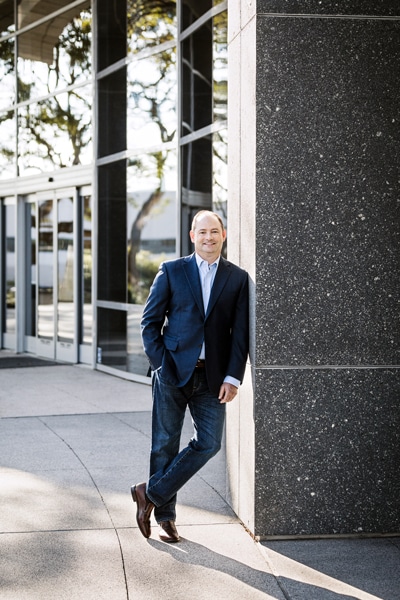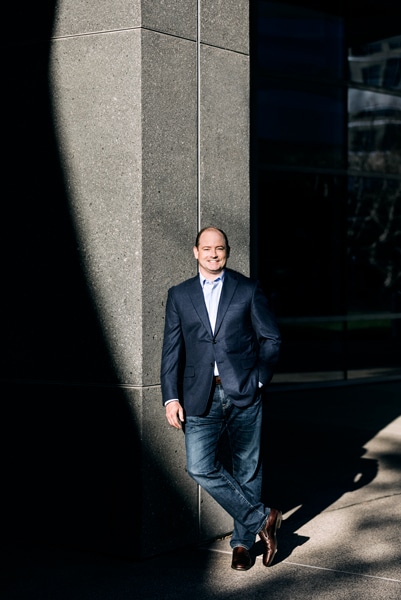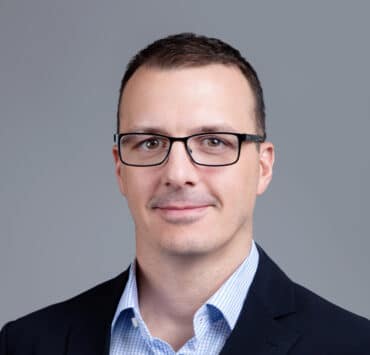|
Getting your Trinity Audio player ready...
|
Mark Snyder became aware of the power of innovation at a young age. Throughout his career, and now as a senior vice president and the head of litigation at wireless technology company Qualcomm, Snyder has taken to heart lessons about Thomas Edison and other famous inventors throughout history.
“I’ve always been fascinated by inventors,” Snyder says. “I grew up thinking about how people got ideas, how they protected those ideas, and how they made a business out of them.”
As an adult, Snyder transformed those interests into a successful career in intellectual property (IP) law. Since joining Qualcomm more than thirteen years ago, he has applied his in-depth legal knowledge to litigate foundational cases, thereby preserving the company’s cutting-edge advancements. Beyond standing up for the company and its innovations, he has also established an environment conducive to collaboration, even on projects that take years to come to fruition.
Snyder began his technical training at the University of Rochester, where he earned a degree in chemical engineering. He then simultaneously pursued a JD and an MBA at Boston College as a next step toward working with—and protecting—the types of innovations that he had always admired. “My thinking was that if I was going to take ideas and create business opportunities out of them, I should understand the fundamentals of how businesses work,” Snyder explains.

Upon completing his schooling, Snyder accepted a role at IP law firm Sheridan, Ross & McIntosh (now Sheridan Ross). At the firm, he drafted patents, licensed and transferred technologies, and started to handle IP litigation—including a case involving the type of technology now commonly used to microchip pets.
Snyder entered in-house practice by participating in a leveraged buyout of an advanced composite materials company with a friend. “I was the sole lawyer there, so I oversaw the entire legal function and handled all kinds of legal matters,” he recalls. His duties ranged from resolving employment disputes to managing the company’s laboratories.
Following the sale of the company five years later, Snyder took a role at a privately owned electronics manufacturer in the telecommunications industry. Afterward, he decided to join Kyocera Wireless (now Kyocera International), a Qualcomm spinoff producing cell phones and handsets. During his five years as lead IP counsel, Snyder led Kyocera’s patent portfolio development, IP litigation, and licensing negotiation efforts.
When he transitioned to his current role at Qualcomm proper, Snyder gained global oversight of the company’s litigation and regulatory matters on top of his ethics, IP, antitrust, and compliance responsibilities. “My day-to-day activities involve issues that often transcend national borders,” he explains. “I also spend a lot of time thinking about potential disputes and how we will meet those future challenges.”
Snyder’s proactive mindset stems in part from Qualcomm’s relatively small docket of ongoing litigation. However, this lull comes mere months after the company received a major victory in an antitrust case in front of the US Federal Trade Commission (FTC).
“At its core, the case was a dispute over what Qualcomm was charging as royalties for its IP,” elaborates Snyder, who expects the ruling to shift the perception of IP licensing across the industry. “The outcome vindicated our business practices. I hope that courts and regulatory agencies will start to recognize that similar commercial disputes can be resolved without bringing antitrust law into the picture.”
“We’re always trying to remain competitive, to keep our inspiration alive, and to protect the company.”
Leading up to the FTC’s benchmark ruling, Snyder spent years crafting Qualcomm’s response to the complaint in close collaboration with his team. Many of his cases, he says, play out over long periods of time—a Japanese FTC case took ten years to resolve favorably.
Considering the typical timelines, Snyder places a warranted emphasis on hiring team members who possess the necessary endurance and drive to see a case through from start to finish. “The people on my team have not only the perspective to understand that these matters take a long time but also a dedication to—and a belief in—the company and in what we’re doing,” he says.
From a leadership point of view, Snyder seeks to embody the same level of dedication and composure that he looks for in his team. In addition, he encourages his team members to take on tasks that will improve their skill sets, and he acknowledges individual contributions when the team succeeds.

“I want to create a team environment where people know what their roles are and how those roles fit into our overall strategy, where they receive credit for their work, and where they can shine,” Snyder emphasizes. Open communication and a shared vision each factor into his approach, which extends to parties outside Qualcomm as well. In those situations, he tries to insert the external party into the internal team to better align their goals and perspectives.
As emerging spaces such as 5G and the Internet of Things open up further opportunities for wireless innovation, Snyder believes that Qualcomm’s products will become increasingly integral to everyday life. With new opportunities, however, come new challenges—especially in a hypercompetitive global industry.
“We get out ahead with our strategic planning, sometimes years before we begin to see cases that directly impact Qualcomm,” Snyder says. “We’re always trying to remain competitive, to keep our inspiration alive, and to protect the company.”
“It’s been a privilege to work with Mark and his team,” says Cravath, Swaine & Moore partner Gary Bornstein. “He always sees how the pieces fit together and how individual cases around the world link up with the company’s long-term strategic goals.”
As he endeavors to anticipate changes to US and international laws that may impact Qualcomm, Snyder also seeks to minimize misconceptions about the company and its IP program. He argues that instead of hurting competition in the market, the company’s innovations incentivize investment and drive forward economic growth.
“I’ve long been committed to the idea that intellectual property promotes economic welfare and economic good,” Snyder says. “We want people to see Qualcomm not as a problem but as a company that creates solutions.”
***
Keker, Van Nest & Peters LLP:
“Mark has cases literally around the world to worry about. Despite that, when we were in trial, he was in court with us every day, helping guide important strategic decisions, providing keen business insight, and ensuring that everyone knew how much the company appreciated all of the hard work.”
—Gene Paige, Partner

